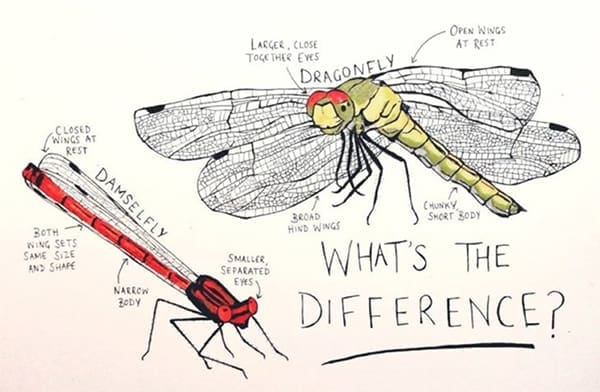Dragonflies are a fan favorite in the insect world. With their beautiful wings, intriguing flying patterns, and the symbolism they hold, it’s hard not to love them.
Besides being the beauty of your summer landscape, dragonflies are also extremely beneficial to your local ecosystem and environments around the world.
Crowd Control
Dragonflies are beautiful and graceful, but they are also tough. They make sure that other flying insect populations stay in check.
Dragonflies prey on mosquitos and flies. Without dragonflies, these flying insects would take over your neighborhood. Adult dragonflies can eat anywhere from 30-100 mosquitoes each day! Make sure to thank the next dragonfly you see for saving you from those pesky, itchy mosquito bites.

PC: Scottish Wildlife Trust
Indicator Species
Dragonflies are a good indication that your environment is healthy. Scientists continuously monitor dragonflies to see how a specific environment is doing. If the dragonflies are thriving, then it’s in good shape. If the dragon population is starting to decrease or already dangerously low, then there’s an issue in the area.
Dragonflies also provide a reliable indication of air quality. They cannot survive in heavily polluted areas. For this reason, you will not see dragonflies in densely populated areas either. If you’re seeing an abundance of dragonflies in your area, you’re likely breathing pretty clean air.

PC: Bug Guide
Dragonflies also require clean water. Dragonflies lay their eggs in water, so when they hatch, the larvae spend some of their time living and growing in water until they are ready to stretch their wings and fly!
How to Attract Them
Having a clean water source is a great place to start. Whether you have a small pond, or just a birdbath, giving dragonflies clean water will promote egg laying and a nice place to rest. But don’t keep it clean! Dragonflies reside in swampy areas with lots of vegetation in the water. Keep leaves, sticks, or anything that falls in the water in place to keep it on the murkier side.

If you don’t have the opportunity to leave out water, never fear, plant some flowers! Dragonflies are known to be attracted to blue and white colors. Consider planting flowers with those colors. If you’re not a fan of blue and white, plant native flowers such as black-eyed Susan, yarrow, and coneflowers to make them feel at home.
If you want to learn more about the wonderful dragonfly or how to incorporate native flowers in your landscape, visit Green Bay Botanical Garden! Stroll through our beautiful Habitat exhibit to learn everything about the mystical dragon fly, especially our Bug B&B and Life of the Dragonfly displays. On your way through, take in the beauty of the Schneider Family Grand Garden to see how you can incorporate beautiful native plants into your landscape.

Habitat was developed by Smithsonian Gardens and is made available by the Smithsonian Institution Traveling Exhibition Service.





